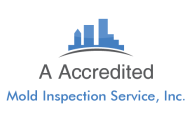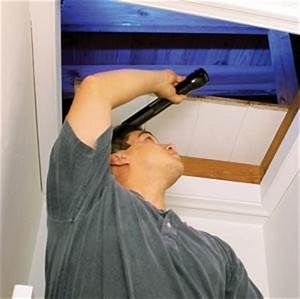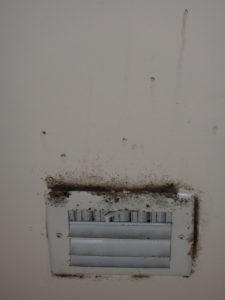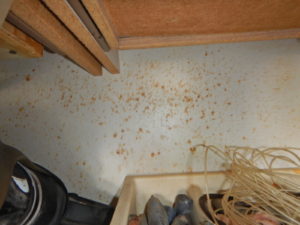Disclaimers For Homeowners
The mold inspector tips in this article are not intended to equip you to conduct your own full and detailed mold inspection. It is just intended to give you a few simple mold inspection tips. Looking for mold may put you in close proximity to mold. Close proximity to mold or exposing mold may result in negative health reactions. If you suspect a problem it is best to contact our Certified Mold Inspector. It is always recommended to have professional mold inspections and testing of your home. If you have a compromised immune system doing a mold inspection can be dangerous. Being in close proximity to mold or exposing mold may lead to serious health problems such as fungal infection.
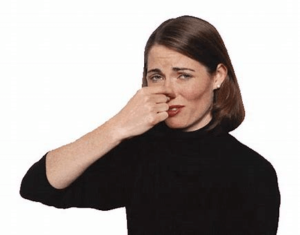
Bad smells are a common sign of mold and other indoor air quality problems. One of the best mold inspector tips is to use and trust your nose when tracking down air quality problems.
Olfactory Mold Inspector Tips:
Check For Odors Near Electrical Outlets and Other Wall Openings.
During a mold inspection in Palm Beach Gardens our mold inspector found growth inside a wall. The only initial indication of a problem was mold odor. The inspector tracked the odor to the source in a kids bedroom wall. The odor was escaping from inside the wall via an electrical outlet. Testing the air indicated nothing unusual, and the visual inspection revealed no visible mold. The only clue was mold odors coming out of the outlet. Sometimes recessed lights will let mold odors, attic odors, or rodent odors and allergens escape from the attic and enter the home.
Check For Odors Near Your AC Ducts
Another mold inspector tip to use when checking for mold odor in your house is to turn your AC off for about 15 minutes. Next turn your AC back on and immediately stand directly under the path of air flowing from a duct. If your AC unit or your home’s duct work is contaminated with mold, you will smell the musty mold odors blowing in your face. Remember do not do this if you are asthmatic, allergic to mold, or have a compromised immune system. Do not do this if you have any of the above-mentioned conditions. If you have any health conditions that could become a problem as the result of exposure to mold do not inspect.
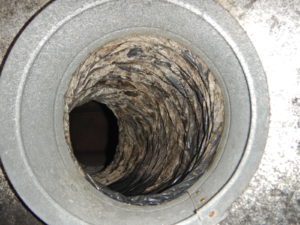
Mold in AC duct in Miami Dade County home we inspected. Mold inspector tip: A mold inspector should look for mold and try and detect mold odors that are very common in AC ducts.
In AC ducts the odors build up when the AC is off and may dissipate after the AC has been on for a while. Please note minor moldy odors and minor mold contamination are not unusual in AC units and may not cause a problem for most people. Having a mold inspector sample the air from your ducts may not do you much good because mold in AC units is often vegetative, in other words in may be growing without producing many spores. Further investigation by having an experienced certified mold inspector inspect inside your AC may be of more benefit.
Visual Mold Inspector Tips:
Look For Mold On AC Registers
Metal AC register grills become cold as air exiting your duct passes through them. If you have high humidity condensation may form on these registers. AC coils are designed to form condensation when you simply use your AC unit in the cooling mode, this feature helps the system to remove humidity from your air.
AC registers in humid buildings and coils in any building have a good chance of forming a mold problem. This is almost never a serious concern. But it may indicate that the AC register is loose or that the home is a bit too humid.
Moldy AC register.
Look For Mold On AC Coils
The bottom sides of AC coils sometimes grow large amounts of velvety Grey Cladosporium mold or clear jelly like bacteria masses. AC registers form black Cladosporium mold. So, check your AC registers & coils for mold.
Look For Humidity Induced Surface Mold
Another mold inspector tip is to look for a powdery white residue. Sometimes mold does not start as the result of a leak in your home but may occur as the result of humidity problems. In such cases the mold typically starts in properties with humidity above 60%RH to 65%RH. While conducting mold testing in Tequesta near Jupiter Fl we found a high end ocean front property to be full of mold. The cause was humid ocean air blowing in through a hole in the sliding glass door. The hole was created because the door’s handle had been removed. Thus, leaving an opening when the door’s handle should have been located. The powdery white residue was on everything in every room of the property.
This mold is very common in our area. As a mold inspector I see this type of problem every week. By far the best way to find this mold is to look for white powder on black clothes, black luggage, and black shoes and belts in the master bedroom closet. Look on black items because humidity mold blends in too well with light colored items. By far the best place to look is almost always in the master bedroom closet. It typically starts here first. The master bedroom closet has a combination of poor circulation, and a close proximity to a humidity source in the form of the master bathroom.
Humidity induced surface mold growing on a leather purse. Purse is held by a client of ours.
Also look behind furniture such as behind the nightstands and also under furniture such as under the dining room table.
Look For Spots on Water Damaged Building Materials
Small spots, smug marks, or a powdery residue in the area that became wet is a good indication of mold. Most mold spots are black, brown, green, or white. These initial growths of mold are typically very small at just a few millimeters across in the start. One way our mold inspector can tell mold from discoloration is to smear it. To tell a smudge mark, a bad paint job, or other marks and stains from mold is testing the suspected mold by rubbing it with a dry cloth. Most mold will at least partially rub off or smear and leave a streak mark on the surface. This is because mold is intentionally designed to be friable (easily broken). In addition, mold spores are intentionally designed to detach easily for dispersal.
Discoloration from scuff marks and paint etc. will often not smear easily. This smear method is sometimes helpful to a degree in providing some preliminary info on what you may be dealing with. Remember all these methods should be used by a certified mold inspector. Of course this method does not work all the time and is not full proof. For example, a golden tan humidity induced type of Aspergillus mold will not smear no matter how hard you try and rub it. During mold testing in a Palm Beach Gardens home this stuff was all over the walls, it grows very slowly and is even hard to sample because it sticks so hard to surfaces. If you are in doubt as to if a substance is mold call our Palm Beach Gardens mold inspector.
Check Window Caulking
Closer view of caulking defect.
Hidden mold inside walls is common, and one of the primary reasons for hidden mold inside walls is window leaks. If you have even minor hairline defects in your window caulking it may let small amounts of rainwater or sprinkler system water into your walls. Moderately or seriously defective caulking causes many mold problems in this mold inspector’s experience.
Check Tack Strips
Tack strips under your carpet will become stained and rapidly rot if you have water entering your walls. Water in your walls means possible mold in your walls. Peeling your carpet back to see the tack strip may loosen your carpet. If your carpet is important to you be cautious about pulling it up.
Inspect Baseboards
When water enters the walls of your house it flows down and soaks into your baseboards and causes them to swell; when they dry, they shrink. Swelling and shrinking causes baseboards to separate from the wall slightly, you will see a small crack between the top of the baseboard and the wall. Water in your walls that causes baseboards to separate from your walls indicates water, and water in your walls may have caused mold. After the Hurricanes of 2005 roof leaks and window caulking defects caused many mold problems, or mold inspector in Jupiter who also covers Juno Beach was very busy discovering growth inside walls. The two main points or water infiltration into these walls were defective window caulking and storm damaged roofs.
The Last But Not the Least Of Our Mold Inspector Tips. Don’t Forget Your Wallpaper
If heavy wallpaper is installed any moisture that enters these walls will become trapped. Moisture trapped behind wallpaper mixed with wallpaper glue is a perfect recipe for a serious mold problem. During mold inspections wallpaper is not typically peeled by a mold inspector. Thus, hidden mold may not always be discovered but it is common to find mold hidden behind wallpaper. The vast majority of moldy wallpaper is on perimeter walls, as opposed to interior partition walls. Perimeter walls are the walls of a building that are about the exterior of a building. These walls receive moisture from cracks and defective caulking on the exterior side of the walls. Inspecting behind sections of wallpaper may reveal large amounts of hidden mold.
If your home has mold problems, our mold inspector tips may help to a small degree. However, you need to consider hiring a professional mold inspector. Do not rely only on the mold inspector tips from this article. It requires years of experience and in many cases a state license is required to perform a proper mold inspection.
In South Florida Call Us At A Accredited Mold Inspection Service.
1-888-381-6651
